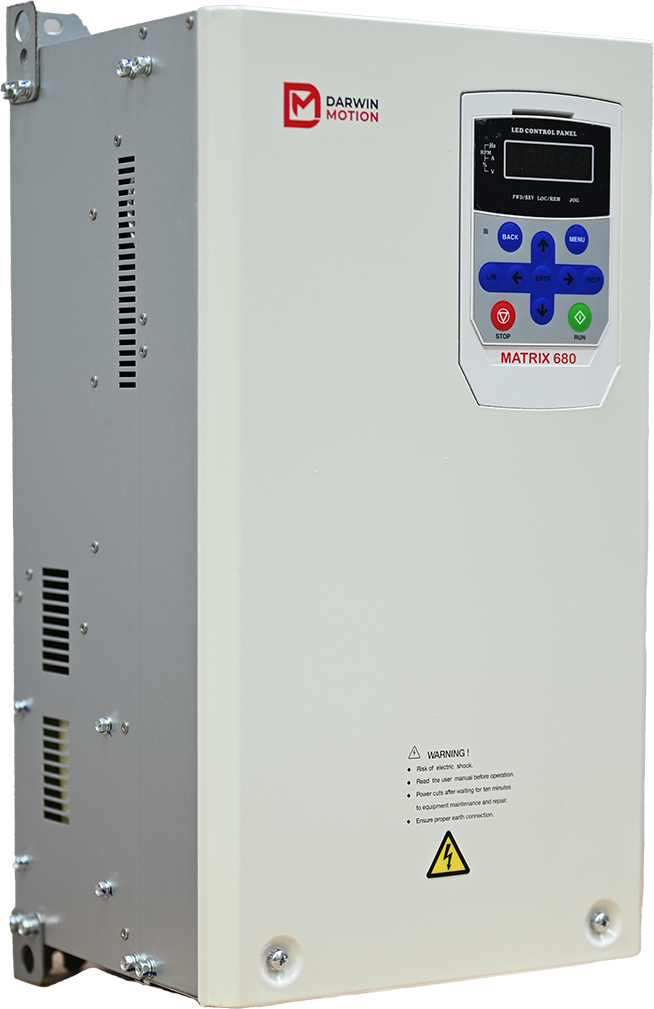Posted on 28th Aug 2024

Variable Frequency Drives (VFDs) are pivotal in modern industrial automation, offering precise control over motor speed and torque. However, they are just one type of drive among several. Understanding how VFDs compare to other drive types—such as Direct-On-Line (DOL) starters, Star-Delta starters, and Soft Starters—can help in making informed decisions about which drive system best suits a particular application. This article explores the key differences, advantages, and disadvantages of VFDs compared to these alternative drive technologies.
Overview: Variable Frequency Drives, also known as Adjustable Frequency Drives (AFDs) or Variable Speed Drives (VSDs), control the speed and torque of an electric motor by varying the frequency and voltage of its power supply. VFDs are essential for applications requiring precise control over motor performance.
Energy Efficiency: VFDs adjust motor speed according to demand, leading to significant energy savings, particularly in applications with varying loads.
Enhanced Control: They provide fine control over motor speed and torque, which improves process control and product quality.
Reduced Mechanical Wear: By controlling acceleration and deceleration, micro drive reduce mechanical stress on equipment, extending the lifespan of both the motor and driven machinery.
Soft Start/Stop: VFDs offer a soft start and stop feature, minimizing electrical and mechanical stress during motor startup and shutdown.
Cost: VFDs can be more expensive upfront compared to simpler drive systems.
Complexity: They require more sophisticated programming and maintenance, which can be a barrier for some applications.
Harmonic Distortion: High Frequency Drive can introduce harmonics into the power system, potentially requiring additional filtering.
Overview: Direct-On-Line starters are one of the simplest and most common methods for starting electric motors. They connect the motor directly to the power supply, providing full voltage from the start.
Simplicity: DOL starters are straightforward in design and operation, making them easy to install and maintain.
Cost-Effective: They are less expensive than regenerative drive and other complex drive systems.
High Inrush Current: DOL starters cause a high inrush current when starting the motor, which can stress the power system and the motor.
Lack of Speed Control: DOL starters do not offer any speed control or adjustment, limiting their versatility in applications where speed regulation is critical.
Mechanical Stress: The sudden start can impose mechanical stress on both the motor and the driven equipment.
Overview: Star-Delta starters are used to reduce the starting current of a motor. They start the motor in a star (Y) configuration and then switch to a delta (Δ) configuration once the motor reaches a certain speed.
Reduced Starting Current: By initially connecting the motor in star configuration, the starting current is reduced, which is beneficial for protecting the power system and the motor.
Improved Performance: Suitable for motors that require a lower starting torque and can benefit from reduced starting stresses.
Limited Speed Control: Like DOL starters, Star-Delta starters do not provide any speed control once the motor is running.
Complexity: The transition between star and delta configurations requires additional control circuitry and can be more complex to implement.
Mechanical Stress: Although starting current is reduced, mechanical stresses during transition can still be significant.
Overview: Soft starters provide a gradual increase in voltage to the motor, allowing for a smooth start and stop. They are designed to reduce mechanical stress and electrical surges during motor startup.
Reduced Mechanical Stress: Soft starters provide a controlled ramp-up and ramp-down of motor speed, minimizing mechanical wear and tear.
Lower Starting Current: They help reduce the inrush current, protecting the electrical system and motor.
Simplicity: Soft starters are relatively easy to install and configure compared to VFDs.
Disadvantages:
Limited Speed Control: Soft starters offer no continuous speed control once the motor is running. They are primarily designed to manage startup and shutdown sequences.
Cost: Although generally less expensive than VFDs, soft starters can still be more costly than simpler starter systems.
Conclusion
Variable Frequency Drives offer superior speed and torque control, energy efficiency, and reduced mechanical stress compared to other drive types. However, they come with higher costs and complexity. Direct-On-Line and Star-Delta starters are simpler and less expensive but lack speed control and can cause high inrush currents and mechanical stresses. Soft starters provide a compromise by offering a smooth start and stop but do not offer the continuous speed control that Darwin Motion VFDs do.
The choice between these drive systems depends on the specific requirements of the application, including cost constraints, desired control levels, and energy efficiency needs. Understanding the strengths and limitations of each drive type ensures that the best solution is selected for optimal performance and cost-effectiveness.